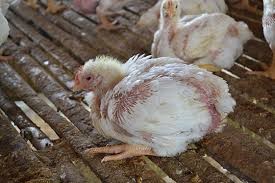Avian Influenza (AI) is one of the most devastating viral diseases in the poultry industry. In recent years widespread outbreaks of H9N2 infections in poultry have been reported throughout the world. In Bangladesh, LPAIVs of subtype H9N2 co-circulate simultaneously with highly pathogenic avian influenza viruses (HPAIVs) of subtype H5N1 in commercial and backyard poultry. Since 2009, H9N2 has been the predominant avian influenza virus (AIV) subtype in our country’s poultry industry.
In broilers, H9N2 viruses can cause unto 65% mortality in farms. Though it is a low pathogenic AI virus (LPAIV), clinical signs and disease effects of H9N2 are far more devastating in the presence of other organisms or other forms of stress: Mycoplasma species, Newcastle disease, Infectious Bronchitis. Additionally, poor environmental conditions adversely influence the severity of the infection and increase mortality, which results in enormous economic loss. In matured broiler breeders, an initial febrile condition associated with depression is followed by a drop in egg production of 5-20% with misshapen and whitened egg. Moreover, about 100% morbidity and 3 to 8% mortality have been reported. In some cases, clinical signs are followed by recurrent drops in egg production for commercial layers, ranging from 2-10% up to 30%. However, recovery is complicated to obtain while egg production remains at 10% less than expected.
Economic loss caused by H9 infection is around 2,80,533.70 Taka per farm on an average, as studied by Bangladesh Livestock Research Institute (BLRI). The study was conducted in 7 farms, with around 8,000 birds per farm and an average observation period of 5 days. In the study, 609 birds (1.01%) were found dead among the 55,230 birds due to the infection. Moreover, the average loss in egg production was 11.57%.
Therefore, ACI introduced Cevac New Flu H9 K, a killed vaccine for controlling LPAI caused by H9N2 in Bangladesh. It has been proven to be safe and efficacious to:
Reduce the severity of clinical signs and mortality;
Reduce losses in birds’ performances (BW, FCR, egg production),
Reduce virus replication in the respiratory system; i.e. reduce shedding in the environment.
A study of the vaccine in early 2020 on 100 birds for 9 weeks revealed its sufficiently immunogenic traits in chicken. The vaccine induced antibody successfully reacted with the circulating strain of H9N2 virus in Bangladesh. The study results indicated that the vaccine’s antigen matched with the virus circulating locally.
In a nutshell, we can significantly reduce the productivity gap and ensure profitability for our poultrymen by using vaccines while fighting against H9N2 Bird Flu.
Dr. F H Ansarey
Managing Director & CEO
ACI Agribusiness





